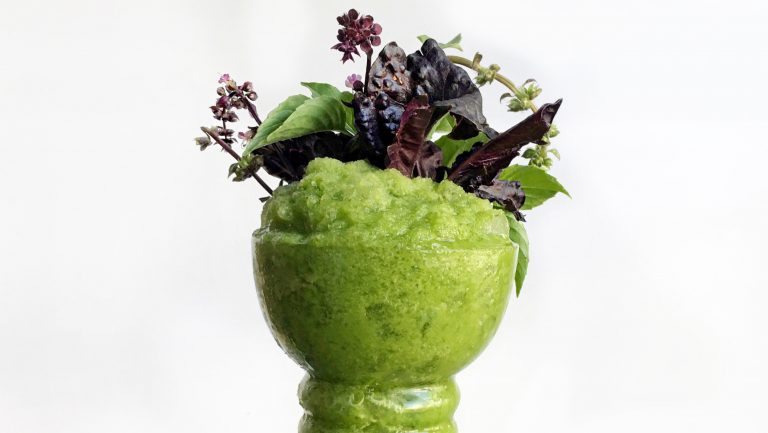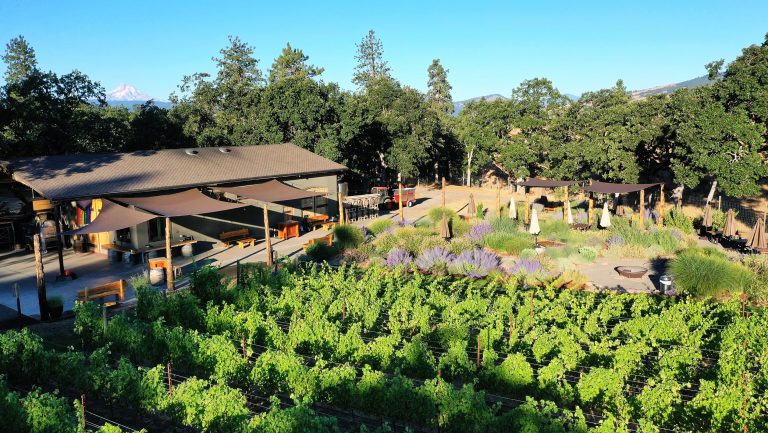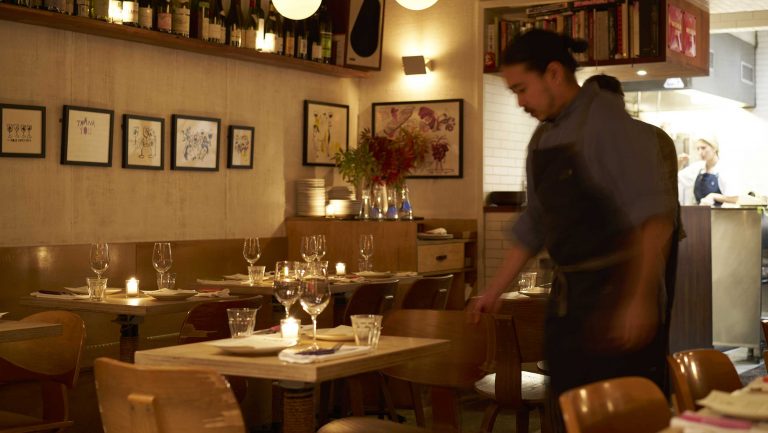So-called dry January may be over, but the zero-alcohol cocktail trend is not. With consumers becoming increasingly focused on wellness, millennials continuing to drink less than their older peers, and nonalcoholic distilled spirits like Seedlip hitting the market, bar managers are taking note and adding sophisticated alcohol-free sippers—in some cases, whole sections of them—to their drinks menus.
“Although we’ve had nonalcoholic drinks on our menu since day one,” says Nathan McCarley-O’Neill, the manager of The NoMad Bar in New York City, “we’ve definitely noticed an upturn in our nonalcoholic drink sales in the last couple of years due to many of our guests being health conscious and not wanting to drink on a night out. We’re finding people are intrigued by what we do, and many times they don’t even realize the soft-cocktails section on our menu is actually [all] drinks without alcohol.”
The popularity of zero-proof drinks seems to be on the rise in bars across the U.S.

Don’t miss the latest drinks industry news and insights. Sign up for our award-winning newsletters and get insider intel, resources, and trends delivered to your inbox every week.
Scott Stroemer, the bar manager at Pacific Standard Time in Chicago, points out that his nonalcoholic drinks are especially popular with the lunchtime crowd. Gabriella Mlynarczyk, a consulting bartender, the author of Clean + Dirty Drinking, and the former beverage director at Accomplice in Los Angeles, notes that her No-groni was a bestselling drink on weekdays, at lunch and dinner, at Accomplice from 2017 through 2018.
SevenFifty Daily spoke with McCarley-O’Neill, Stroemer, Mlynarczyk, and other bartenders to learn more about this teetotal cocktail trend and to learn their strategies for creating profitable—and innovative—nonalcoholic drinks programs.
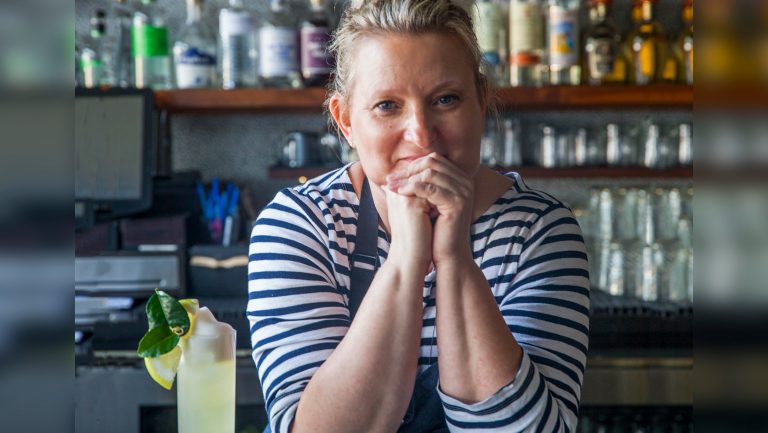
Maximizing Revenue
Erick Castro, a partner in the bars Polite Provisions, which launched in 2013, and Raised by Wolves, which opened in May 2018, in San Diego, says that he’s always had nonalcoholic drinks on the menus. He was inspired to include them because of a break he took from imbibing alcohol in 2011 after a health scare, when he realized how few options there were at other bars. “I would walk into world-class bars,” he says, “and my only option would be a Sprite or sugary soda.” He recognized that for bars it was a missed opportunity.
With such a limited selection of nonalcoholic drinks, Castro says, “you’re literally serving something [your guests] can get at McDonald’s. You’re not showcasing your bar’s talent, and you can only charge $2 to $3 for it. We sell our nonalcoholic drinks for $6 to $8, and while they can be labor intensive, the margin and quality is so much better compared with a glass of Sprite.” Besides that, Castro adds, “every guest who walks in the door deserves to have a drink developed with intention and to have an elevated experience.”
Aaron Polsky, the bar manager of Harvard & Stone in Los Angeles, agrees. “We sell alcohol-free cocktails for the same reason stadiums sell vegan hot dogs at baseball games,” he says. “People want to be part of the experience. If the alternative is making zero dollars on soda water or $2 on a Coke, why not make $4.50 on an $8 nonalcoholic drink?”
There are a number of ways to increase revenue from sales of zero-proof drinks, say bartenders. Start by maximizing your resources, advises Castro. “One thing we do explicitly with our beverage program at Raised by Wolves,” he says, “is look at the syrups, juices [and other ingredients] we’re only using in one drink and brainstorm ways to use them in our nonalcoholic drinks.”
For example, the bar uses fresh honeydew juice in one of its dessert cocktails, which Castro says is “blended and cold and doesn’t sell well.” Rather than discard the excess juice at the end of the day, he says, “we decided to put it in one of our nonalcoholic drinks, which not only elevates the drink but helps with costs and minimizes waste.”
Castro also stresses the value of educating staff to help drive sales of zero-proof drinks. “We make sure our staff is well trained on our nonalcoholic beverage menu,” he says. “That way, guests know they’re not just getting a smoothie but something well thought out and well crafted, which makes them more likely to order that than a soda.”
Polsky also recommends training staff to stay attuned to cues from guests that can help drive zero-proof drink sales. “Our staff is all bartenders,” he says, “so they’re very familiar with the drinks because they’re the ones making them. If they perceive someone is not drinking, they’ll point out that all of the drinks [on the menu] with asterisks are available without alcohol. People really appreciate that extra effort, and it makes them more likely to order a nonalcoholic cocktail.”

Creating Complexity
But creating a good zero-proof drink can sometimes be more challenging and labor intensive than making one with spirits. “We probably spend more time focusing on research and development for nonalcoholic drinks than on the rest of our beverage program,” says McCarley-O’Neill, “because we want to offer the guest the same level of drink and experience.”
While this may seem counterintuitive, as Stroemer notes, “Anyone can make a bourbon cocktail, but it’s a challenge as a bartender to make a spirit-free cocktail.”
Castro elaborates, saying, “You can’t just use a bunch of juice. The drink has to have depth and complexity and the same components of a delicious cocktail—appealing to the eyes, nose, palate, and senses.”
At Pacific Standard Time, says Stroemer, “we build most of our flavors using infused syrups, fresh herbs, dried grapefruit, and such, and [try to] find the right balance between bitter and sweet.”

To add complex flavors to nonalcoholic drinks, Gina Chersevani, the owner of Buffalo & Bergen in Washington, D.C., recommends using water extracted from seasonal fruits and vegetables. Cucumbers, melons, and cantaloupes are good choices, she says, because “they’re really bright and have less sugar and fewer calories than heavy, dense fruits like apples and pears.” Additionally, she says, her staff is currently “using fermented seasonal cranberry sage in some drinks, which has really amazing style and flavor.”
But such complexity often comes at a cost—in ingredients, time, and pure trial and error.
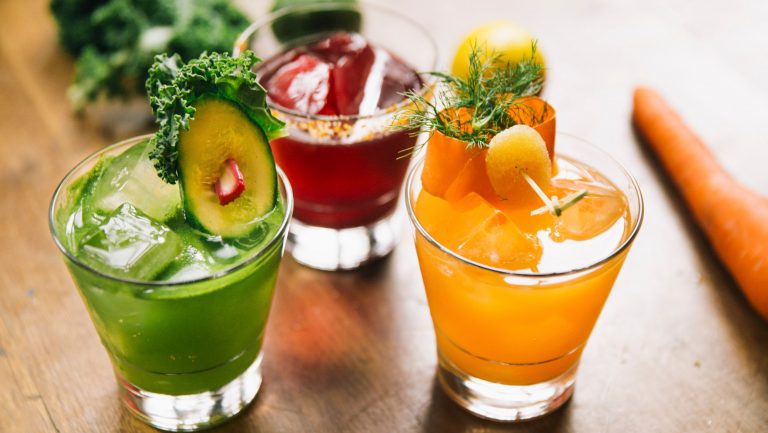
Are Non-Alcoholic Drinks Here to Stay?
Tales of the Cocktail panelists discuss markets, costs, and current and future trends in the spirits-free space
Managing Costs and Labor
Mlynarczyk has observed that sometimes the cost of making nonalcoholic drinks can be higher than that of alcoholic ones. “I want to be thoughtful and not just throw a bunch of stuff into a shaker,” she says, “but sourcing complex, nonalcoholic ingredients can be pricey. I had a Sage Ramos Fizz on the menu at Accomplice about a year ago that was made with matcha green tea, which was quite expensive. We ended up taking it off the menu because the margins were too low.”
Polsky, who is also a former brand ambassador for Seedlip, a maker of nonalcoholic distilled spirits, says that while Harvard & Stone uses Seedlip in all of its booze-free drinks, “it costs two to three times more than our well vodka.” But, he points out, you can’t charge the same price for those drinks as a regular cocktail. “Because at the end of the day,” he says, “people associate the value of a drink with its potential for inebriation.”
Pre-batching Ingredients
Polsky adds that streamlining workflow and better allocating inventory can help minimize those costs and labor. “We go into menu development with a plan,” he says. “We think of what ingredients are only getting one use [and] figure out ways to stretch them out so we’re not wasting product.” He also explains that the bar staff had been batching separate bottles of sweeteners, such as fruit juices and flavored simple syrups, for nonalcoholic drinks until they realized they weren’t selling as many of those and the sweeteners were going bad. “Now we pre-batch ingredients that can be used in both nonalcoholic and alcoholic drinks so we’re not throwing away a bunch of stuff.”
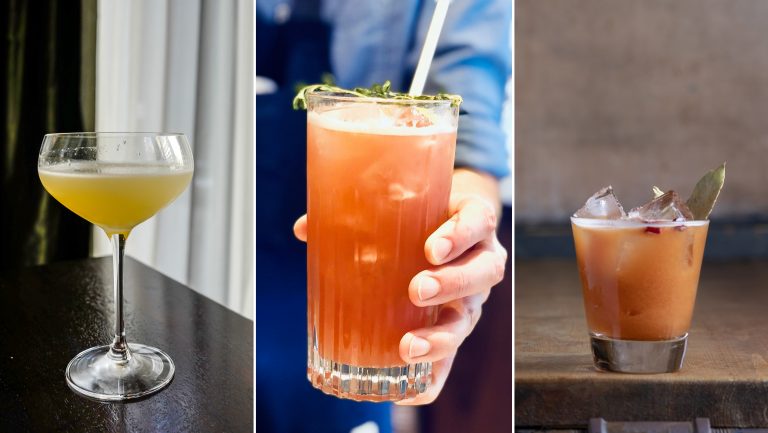
Mlynarczyk explains that pre-batching nonalcoholic drinks is a great strategy for developing complex flavors and saving time during service. “When I was at Hearth & Hound [the recently closed L.A. restaurant],” she says, “we had two bottled [nonalcoholic] cocktails, including a No-groni with gin botanicals like coriander seeds and juniper berries, plus hibiscus tea, Szechuan peppercorns, bitter orange peel, and cinnamon. Because it was premade, it wasn’t super labor intensive, and if someone ordered it, we just poured from the bottle, which made it really cost effective.”
And what do bartenders think is the sign of a really well made nonalcoholic drink?
When the customer doesn’t even know the alcohol is missing, says Castro. “Our Melon Market Swizzle at Raised by Wolves has honeydew, lime, Indian yogurt, and mint,” he says. “People have tasted it and think it must have Chartreuse in it. That’s when you known a mocktail has achieved some singularity—when people don’t actually believe you when you tell them there’s no alcohol in it.”

Dispatch
Sign up for our award-winning newsletter
Don’t miss the latest drinks industry news and insights—delivered to your inbox every week.
Laura Scholz, a writer and editor based in Atlanta, has covered food, spirits, wellness, and travel for the Atlanta-Journal Constitution, the Atlantan, Eater Atlanta, Liquor.com, Tales of the Cocktail, VinePair, and other publications. She is currently the fitness editor of Atlanta magazine. Follow her on Instagram @lbscholz.


